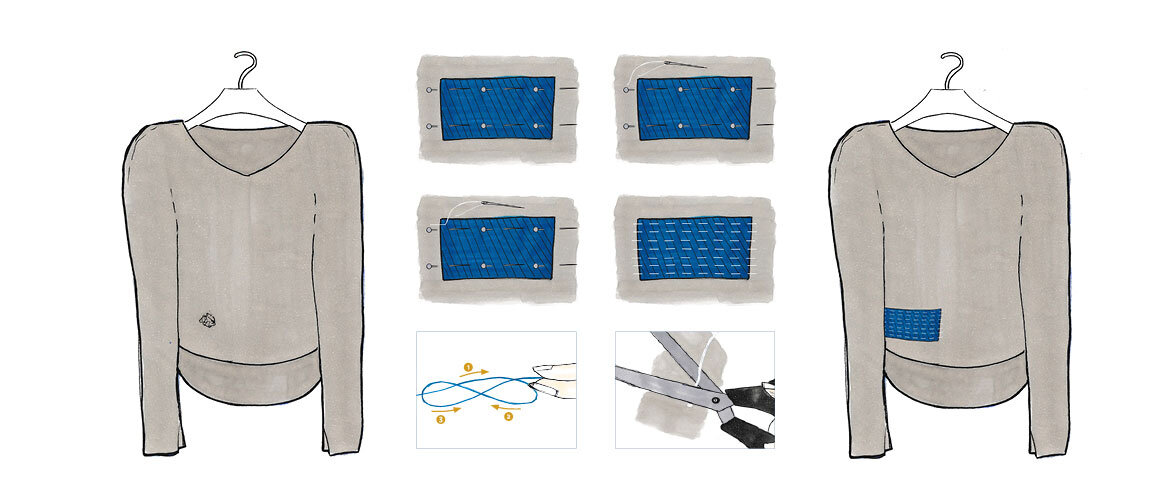
Portfolio—Design Futures & collaboration: Culture of repair.
Boro
This project is based on the traditional Japanese mending practice Boro, which has been identified as a potential antidote to fast fashion, thus mending society’s conflicted relationship with clothing. By encouraging the target audience and their surroundings to adopt the practice into their daily lives, a positive impact on waste quantity, shopping frequency and self-esteem is being fostered.
With the advent of the industrial revolution, mass production through mechanisation, the omnipresence of affordable clothing and a readiness to replace slightly damaged garments has become the norm for contemporary societies. Therefore modern civilisation is not only facing the impacts of increasing waste, but also the loss of important life skills as repairs are no longer a part of daily life.
Mending, a constant necessity across all classes in the past, has been reduced to a voluntary activity, that is perceived as a sign of poverty and/or thrift, thus drawing unwanted attention and judgement from a society that praises the new. Paradoxically, the same society celebrates the repaired or distressed look, approved by the fashion industry, as a statement/trend. Boro has fallen victim to cultural appropriation, both, from within Japan and abroad, thus reducing it to a distant memory of feudal power, shrouded in exotic obscurity.
Additionally, its Western perception as a philosophy of material appreciation, care and slowness differs greatly from its true contemporary status in Japanese society. Therefore, the design of a transition manual seeks to introduce Boro as a potential antidote to fast fashion due to its historic relevance, rather than an exoticised practice to be appropriated.
PROJECT TYPE
University Assignment
COMPLETED IN
June 2017
SKILLS
Redirective Practice
Typography—Prosper White washed Book cover series Bloody Banana Bender Flux
Aviation—An Office With A View Safety first Boeing 737 overwing exit Sterile flight deck
Illustration—Creature Feature Forensic drawing
Design futures & collaboration—1501 steps Boro The Gift Heritage Defense Kit Water Inc.






